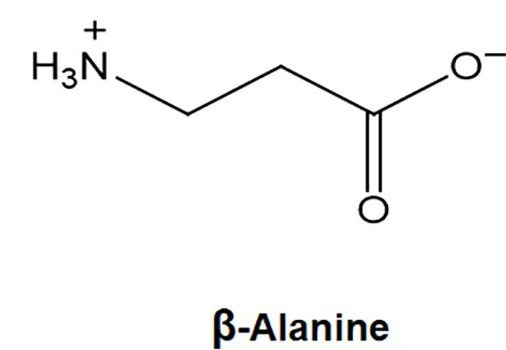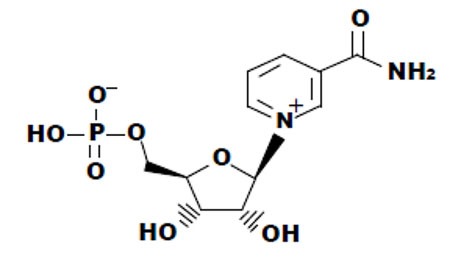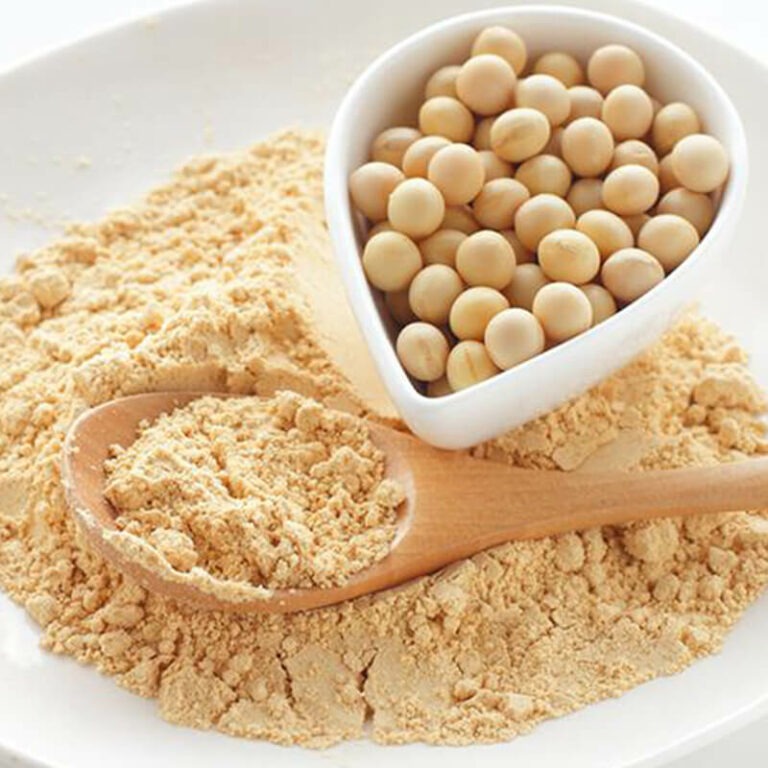Navigating the Beta-Alanine Boost – Max Benefits, Min Side Effects
In the dynamic realm of sports nutrition and performance supplements,…
In the dynamic realm of sports nutrition and performance supplements, few ingredients have captured the attention of athletes and fitness enthusiasts quite like beta-alanine. Whether you’re a competitive athlete striving for that extra edge or a weekend warrior pushing your personal limits, beta-alanine is a supplement that promises to help you go further, faster. But what exactly is beta-alanine, how does it work, and what can you expect when you add it to your regimen? In this comprehensive guide, we’ll take a deep dive into the science behind beta-alanine, explore its myriad benefits, discuss how much you should be consuming, and outline potential side effects and strategies to minimize them. By the end, you’ll have a clear roadmap for harnessing the power of beta-alanine to maximize your performance while keeping any unwanted effects at bay.
1. Understanding Beta-Alanine: The Basics
What Is Beta-Alanine?
Beta-alanine is a non-essential amino acid, meaning your body can produce it on its own, and you can also obtain it from various protein-rich foods. However, unlike other amino acids that are directly used for building proteins, beta-alanine’s primary role isn’t to construct muscle tissue—it’s all about creating something even more powerful: carnosine.
The Role of Carnosine
Carnosine is a dipeptide composed of beta-alanine and histidine. Think of it as a naturally occurring compound that sits inside your muscle cells, acting as a buffer against acid build-up during high-intensity exercise. When you push your muscles to the limit, they produce lactic acid, which can lead to an accumulation of hydrogen ions and a decrease in pH. This drop in pH is what causes that familiar burning sensation in your muscles and contributes to fatigue. Carnosine works by neutralizing these acids, essentially buying you extra time before fatigue sets in.
How Beta-Alanine Leads to Increased Carnosine Levels
When you supplement with beta-alanine, you provide your body with more of the raw material it needs to produce carnosine. Over time, this can lead to higher carnosine concentrations in your muscle tissue, which in turn enhances your ability to buffer acid during intense exercise. The result? You can potentially push harder, perform better, and recover faster from your training sessions.
2. The Science Behind the Beta-Alanine Boost
A Closer Look at the Mechanism
At its core, beta-alanine supplementation is all about enhancing your muscles’ ability to resist fatigue. The process starts with beta-alanine entering your bloodstream, where it is taken up by muscle cells. Inside these cells, beta-alanine pairs with histidine to form carnosine. Numerous studies have demonstrated that regular supplementation with beta-alanine can significantly elevate muscle carnosine levels, sometimes by as much as 60% over baseline values.
The Buffering Effect
Once carnosine levels are elevated, your muscles become more efficient at buffering hydrogen ions generated during high-intensity exercise. This buffering capacity allows you to maintain a higher pH level within your muscles, delaying the onset of muscle fatigue. In practical terms, this means you might be able to perform additional repetitions during weight training, sustain a higher intensity during sprints, or push through that final, gruelling set when everyone else has tapped out.
The Cascade of Benefits
The science doesn’t stop at just delaying fatigue. Enhanced buffering capacity can lead to a cascade of benefits:
- Improved Performance: Athletes report better overall performance in activities that require short bursts of high-intensity effort.
- Enhanced Endurance: With delayed fatigue, you can sustain intense efforts for longer periods.
- Faster Recovery: By reducing the metabolic stress on your muscles during exercise, beta-alanine may also contribute to improved recovery times, allowing you to train more consistently.
3. The Benefits of Beta-Alanine Supplementation
Beta-alanine has garnered popularity for many reasons. Let’s explore the key benefits that have made it a staple in the supplement routines of athletes and fitness enthusiasts alike.
Boosted Exercise Performance
One of the primary benefits of beta-alanine is its ability to enhance exercise performance. Here’s how:
- High-Intensity Training: Beta-alanine is particularly beneficial for activities that involve short bursts of high-intensity efforts—think sprinting, weightlifting, or high-intensity interval training (HIIT). The increased carnosine levels help keep your muscles functioning optimally during these demanding activities.
- Increased Reps and Sets: Many athletes find that they can perform more repetitions during resistance training sessions when supplementing with beta-alanine. This extra volume can translate into greater muscle hypertrophy over time.
Muscle Fatigue Delay
The burning sensation you experience during intense exercise is largely due to the accumulation of acid in your muscles. With elevated carnosine levels, beta-alanine supplementation helps counteract this acid build-up. This delay in muscle fatigue can be a game-changer during competitions or intense training sessions, allowing you to extend your performance window significantly.
Enhanced Muscle Endurance
For endurance athletes, the benefits of beta-alanine are equally compelling. By buffering the acids that accumulate in your muscles, beta-alanine can help you maintain performance levels during prolonged activities. Whether you’re running a marathon or cycling for hours, sustaining muscle endurance is crucial to success.
Antioxidant and Neuroprotective Potential
Emerging research has started to uncover additional roles for beta-alanine beyond just muscle performance. Carnosine, the compound synthesized from beta-alanine, exhibits potent antioxidant properties. This means it can help neutralize harmful free radicals produced during intense exercise, reducing oxidative stress and potentially aiding in cellular repair. Some preliminary studies also suggest that carnosine might offer neuroprotective benefits, supporting brain health and cognitive function—a bonus for athletes who need to maintain focus under pressure.
Support for Special Populations
Beta-alanine supplementation can be particularly beneficial for athletes with certain dietary restrictions or digestive sensitivities. For instance, individuals who have difficulty digesting other protein supplements or who experience gastrointestinal discomfort with other performance-enhancing products may find that beta-alanine is a gentler option that still delivers impressive results.
4. Recommended Dosage and Strategies for Use
Standard Dosage Guidelines
Most research on beta-alanine suggests that a daily dose of 2 to 5 grams is effective for increasing muscle carnosine levels. However, the optimal dosage can vary based on factors such as body weight, training intensity, and individual response. Here are some common dosing strategies:
- Split Doses: Dividing your daily dose into multiple smaller servings (for example, 1 to 1.5 grams taken several times a day) can help minimize potential side effects.
- Loading Phase: Some athletes choose to undergo a loading phase, taking around 6 grams per day for a couple of weeks to rapidly elevate muscle carnosine levels. After this initial phase, a maintenance dose of 2 to 3 grams per day is typically sufficient.
- Time-Release Formulations: Certain products use time-release technology to deliver beta-alanine gradually, allowing for larger single doses without triggering the common side effect of tingling.
Timing and Integration
The timing of your beta-alanine intake can also play a role in its effectiveness. While there isn’t a strict “window” like there is with post-workout protein shakes, consistency is key. Taking beta-alanine with meals or as part of your regular supplement routine can help ensure steady levels in your bloodstream. Some athletes prefer to take it before workouts to potentially maximize its immediate benefits, while others spread it evenly throughout the day.
Combining with Other Supplements
Beta-alanine is often used in conjunction with other performance-enhancing supplements. For example, pairing beta-alanine with creatine or branched-chain amino acids (BCAAs) can create a synergistic effect that enhances both strength and recovery. If you’re considering stacking supplements, it’s a good idea to consult with a sports nutrition expert to tailor the regimen to your specific goals and needs.
5. Potential Side Effects and How to Manage Them
No supplement is without its potential drawbacks, and beta-alanine is no exception. However, most of the side effects associated with beta-alanine are mild and manageable.
The Tingling Sensation (Paresthesia)
- What It Is:
One of the most commonly reported side effects of beta-alanine supplementation is a harmless tingling sensation, known as paraesthesia. This feeling is often most pronounced in the face, neck, and hands. - Why It Happens:
Paraesthesia is believed to be caused by the rapid influx of beta-alanine into the bloodstream, which can stimulate nerve endings temporarily. - How to Manage It:
The simplest way to mitigate this sensation is to split your daily dose into smaller portions. Time-release formulations are also an effective strategy, as they help distribute the beta-alanine more evenly over several hours, reducing the intensity of the tingling.
Flushing and Skin Reddening
- Description:
Some users report temporary skin flushing or redness, which is generally short-lived and not harmful. - Management:
Like paraesthesia, this side effect can be minimized by taking smaller, more frequent doses rather than a single large dose.
Gastrointestinal Discomfort
- Potential Issues:
In rare cases, particularly when large doses are consumed at once, some individuals may experience mild gastrointestinal discomfort, such as stomach cramps or nausea. - Tips to Prevent:
If you’re prone to stomach issues, try taking beta-alanine with food or gradually increasing your dosage over time until your body adapts.
Effects on Heart Rate
- Reported Effects:
A minority of users have noted a slight increase in heart rate after taking beta-alanine, likely due to its stimulating effects. - What to Do:
If you experience noticeable changes in heart rate or feel uneasy, it may be best to reduce your dosage and consult with a healthcare professional.
Impact on Taurine Levels
- Taurine Interaction:
There is some evidence suggesting that high doses of beta-alanine might reduce taurine levels in the body. Taurine is another amino acid important for muscle function and overall cellular health. - Managing the Balance:
If you’re concerned about taurine depletion, consider discussing supplementation strategies with a nutrition expert. Sometimes, a balanced diet that includes taurine-rich foods (such as fish and poultry) can help offset any potential reduction.
6. Integrating Beta-Alanine into Your Training Routine
Tailoring Your Supplementation
Every athlete is unique, and the way beta-alanine works for one person might differ from another. Here are some steps to help you integrate beta-alanine effectively into your regimen:
- Start Slowly:
If you’re new to beta-alanine, begin with a lower dose to see how your body reacts. Gradually increase the dosage as needed while monitoring for any side effects. - Keep a Supplement Journal:
Tracking your dosage, timing, and any side effects can be invaluable. Over time, this will help you fine-tune your intake to match your performance and recovery needs. - Combine Strategically:
Think of beta-alanine as one component of your broader nutritional strategy. When combined with a balanced diet, proper hydration, and other performance supplements, it can help you achieve a synergistic effect that elevates your overall training.
Practical Use Cases
- Pre-Workout Boost:
Some athletes prefer taking beta-alanine before their workouts, hoping to leverage its benefits during the most intense parts of their training. If you choose this method, ensure you take it about 30–60 minutes before your session. - Daily Maintenance:
Others find that splitting the dose throughout the day helps maintain steady levels in the muscles, which is especially beneficial for those engaged in multiple training sessions or long-duration activities. - Recovery Enhancement:
By supporting muscle buffering and reducing fatigue, beta-alanine may also contribute to faster recovery between sessions. Consider pairing it with a protein shake or BCAAs immediately after exercise for a comprehensive recovery boost.
Real-World Success Stories
Consider the experience of elite athletes and everyday fitness enthusiasts who have integrated beta-alanine into their routines. Many report that a consistent beta-alanine regimen has helped them push through those extra reps, maintain high-intensity output for longer, and recover more quickly after grueling sessions. For instance, competitive sprinters have observed improved performance in short, explosive bursts, while bodybuilders credit beta-alanine with helping them handle the volume of training required to build lean muscle mass.
These anecdotal successes, backed by scientific research, underscore beta-alanine’s potential as a performance enhancer. However, the key is to experiment and find the sweet spot that works for your body—because even the best supplement is only as good as the strategy behind its use.
7. Final Thoughts: Maximizing Your Beta-Alanine Benefits
Beta-alanine stands out as a potent supplement in the sports nutrition arena, offering benefits that range from delayed muscle fatigue and enhanced endurance to potential antioxidant support and neuroprotective properties. Its ability to boost carnosine levels in your muscles can provide that extra push you need during high-intensity training sessions, enabling you to perform at your peak and recover faster.
That said, like any supplement, beta-alanine isn’t a one-size-fits-all solution. The key to maximizing its benefits lies in understanding your own body, starting with a manageable dose, and adjusting your intake based on your training demands and how you feel. By splitting your doses, considering time-release formulations, and keeping an eye on potential side effects like tingling, flushing, or gastrointestinal discomfort, you can enjoy the performance benefits of beta-alanine while minimizing any downsides.
Remember, supplementation is just one part of a comprehensive approach to fitness. A balanced diet, proper hydration, consistent training, and adequate rest all work together to help you reach your goals. Beta-alanine can be the extra gear in your recovery toolkit—one that helps you push your limits, improve your performance, and ultimately, achieve your personal best.
As you continue to explore ways to enhance your training, keep an open mind about new supplements and strategies. Listen to your body, track your progress, and don’t hesitate to consult with a healthcare or nutrition expert to ensure you’re on the right track. With the right approach, beta-alanine could be the secret boost that takes your performance to the next level.
Disclaimer: This blog post is crafted for informational purposes and isn’t an endorsement of any supplements. Consultation with professionals is vital when making health or athletic decisions.







